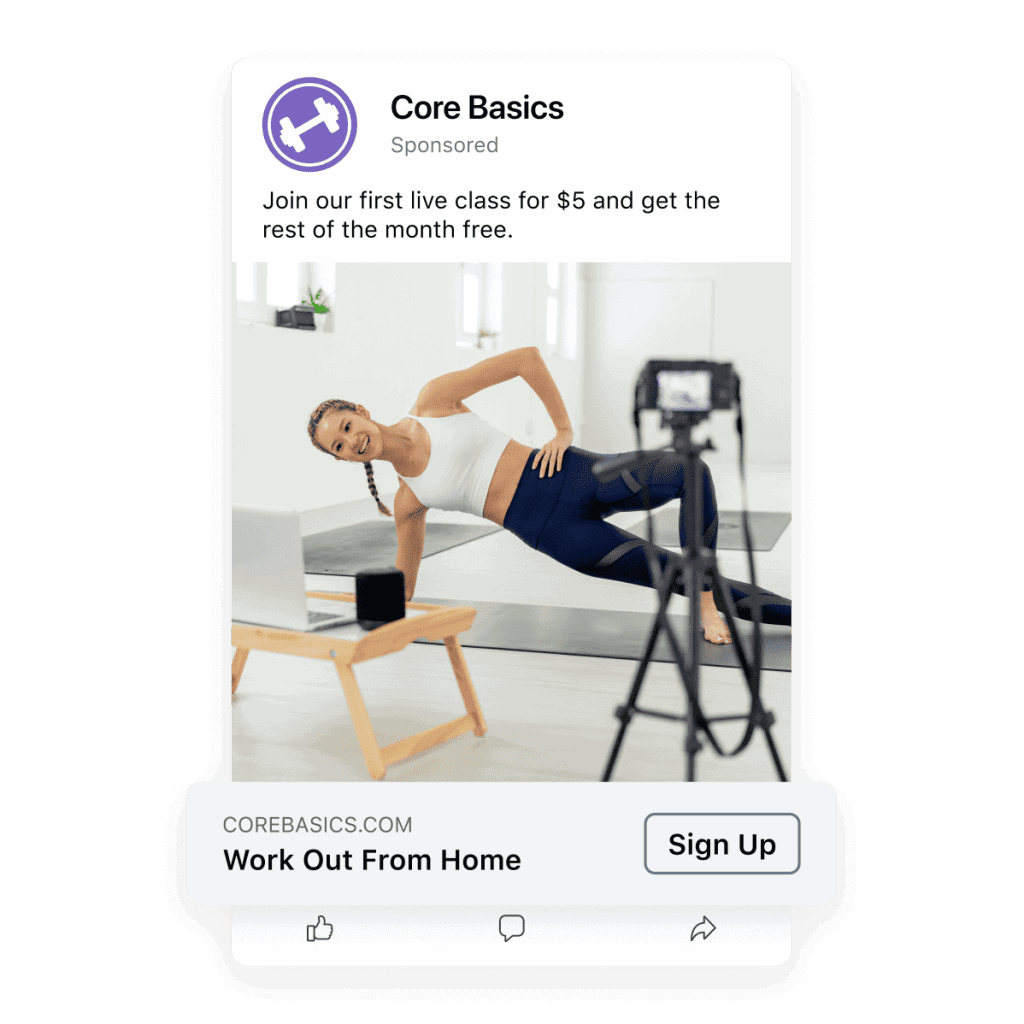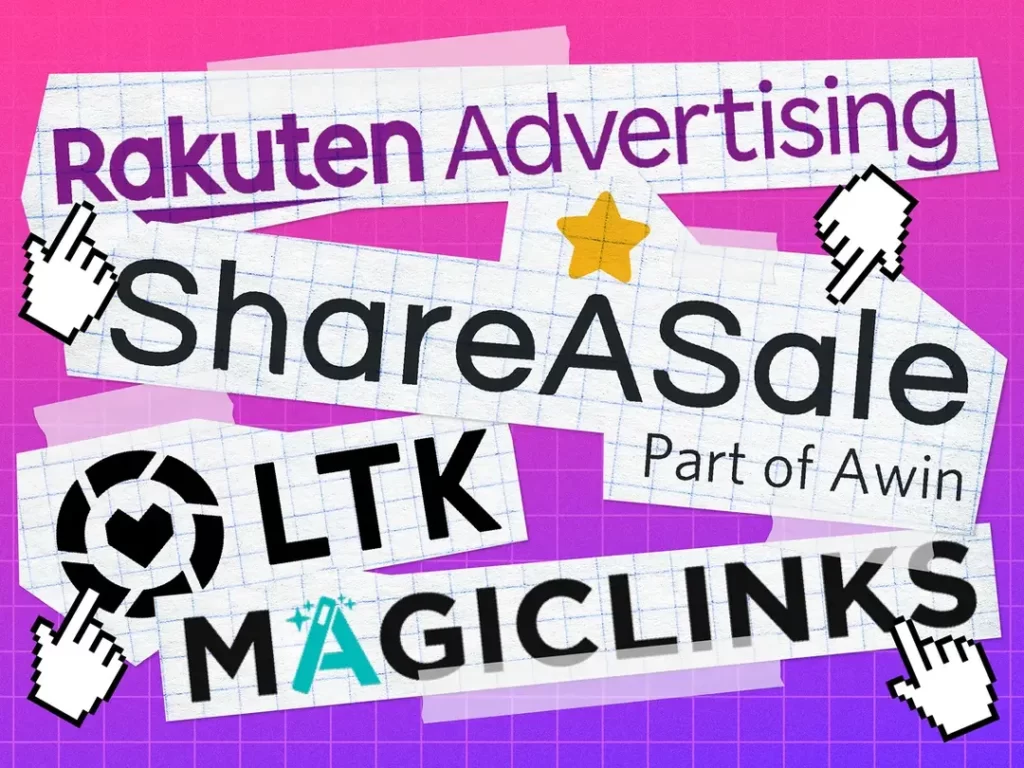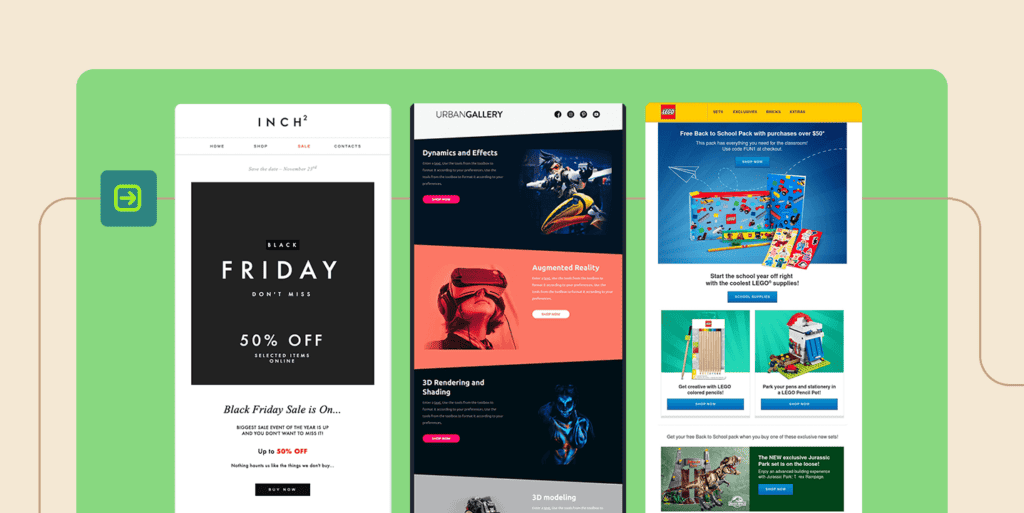Introduction to the Major Types of Digital Marketing
Over the past two decades, digital marketing has revolutionised how companies promote their products and services. As the internet and mobile technology have become integral parts of everyday life, digital marketing has emerged as one of the most effective ways for businesses to reach potential customers. However, it can get confusing with so many options and strategies falling under the digital marketing umbrella.
In this comprehensive guide, we’ll explore the major types of digital marketing, breaking down the strengths and best uses of each. Gear up for a high-level overview of modern businesses' key digital marketing categories to grow their presence and convert more leads.
- Content Marketing Powers Brand Building
- Paid Social Ads Drive Targeted Traffic
- Search Engine Marketing: Outsmarting the Rankings
- Affiliate Marketing: Profiting from Promotional Partners
- Display & Video Ads Get Results
- Email Marketing Achieves Unrivalled ROI
- Automation & Workflows Continue Customer Journeys
- Optimisation & Testing Improve Email Performance
- Driving Leads & Sales Through Website Optimisation
- Leverage Retargeting Techniques to Reconnect Site Traffic
- The Crucial Role of Analytics & Attribution
- Key Takeaways & Next Steps
- Types of Digital Marketing (FAQs)
Content Marketing Powers Brand Building

One extremely versatile form of digital marketing comes in the form of content posted online to attract and retain an audience while promoting a company, product line, or brand. Known as content marketing, this strategic approach focuses on creating and sharing valuable, relevant material that does not overtly promote but still builds brand awareness and loyalty.
Well-crafted blog posts, videos, infographics, case studies, and other formats allow businesses to flaunt their experience while providing readers with helpful information and entertainment. When done right, content marketing through owned media channels subtly promotes the brand while avoiding overly salesy pitches that turn readers off.
Mastercard’s Priceless Cities website brilliantly demonstrates content marketing by offering locals and visitors updated insider tips on attractions, dining, nightlife, and shopping in major cities worldwide. From Seattle restaurant guides to Moscow arts and culture features, the engaging, travel guide-style content draws readers in while associating Mastercard with high-end yet accessible city excursions worldwide.
75% of Marketers Use Content Marketing to Expand Brand Awareness
Marketers overwhelmingly utilise content marketing in their digital marketing strategies, with 75% of B2C companies focused on brand building turning to blogs, visual media, and other owned content. Compared to more disruptive forms like pop-up ads, effective content organically reaches and converts potential customers.
Well-optimised, keyword-rich content on company websites, LinkedIn business pages, Medium, and other digital real estate controlled by the brand serves multiple marketing objectives through search engine optimisation (SEO) and thought leadership positioning.
Types of Content Marketing
Here, we will explore several significant mediums for effective content marketing:
Blogs
One of the most ubiquitous forms of content marketing comes from blog posts published on company websites, marketing sites like HubSpot and Mashable, and third-party platforms such as Medium.
Optimise blog content with SEO practices in mind, including thorough keyword research. Long-form, in-depth blog posts with over 2,000 words perform best for driving traffic and conversions. Insert relevant statistics, supporting facts from reputable sources, images, videos, and quotes that break up blocks of text.
eBooks and Whitepapers
Digital documents in ebooks, guides, and whitepapers allow brands more real estate to demonstrate expertise in trends, customer pain points, industry challenges, and product capabilities. Pages routinely exceed blog length for enhanced lead generation.
Webinars and Videos
Both live and pre-recorded videos permeate content marketing plans, as viewers increasingly prefer digesting information through dynamic motion graphics, interviews with executives, and interactive presentations. Promoted across social media, popular video content converts at high rates.
Infographics
These visual statistical representations succinctly communicate research, comparisons, step-by-step processes, and other data-intensive messaging. The popular bite-sized graphic format spreads organically across social media through shares.
Paid Social Ads Drive Targeted Traffic

While platforms like Facebook, Instagram, Twitter, YouTube, Pinterest, and more originated as social networking sites, they have rapidly developed into powerful advertising vehicles for digital marketing via paid social ads.
Hyper-targeted promotions that appear in users’ feeds alongside relevant content leverage the rich behavioural data these social sites collect on members—advanced targeting options combined with compelling creative make paid social a go-to digital marketing avenue.
65% of Marketers Advertise on Facebook
Per Social Media Today, 65% of digital marketers use Facebook advertising to drive brand awareness and website traffic.
Meanwhile, Instagram now ties with Facebook at 65% adoption thanks to avant-garde features like augmented reality ads and Instagram Stories. This visual content channel offers advertisers unparalleled ways to reach and engage users.
Crafting Effective Social Media Ads
While each social platform calls for campaign customisation, intelligent digital marketers follow essential best practices in structuring and optimising paid social efforts:
- Detailed Targeting: Leverage the platform's data on geography, age, interests, behaviours, professional roles, and more
- Compelling Creative: Ad copy, images, or video should stop the scroll and raise interest
- Strategic Placements: Seek placement alongside engaging, brand-relevant content
- Concise Calls-to-Action: Link clearly to intended conversion goals like visiting the site, signing up for a webinar, or downloading educational materials
Search Engine Marketing: Outsmarting the Rankings

Digital marketing experts agree unanimously on the immense value search visibility offers. Enter search engine marketing (SEM) uses paid advertising and optimisation tactics to boost visibility on search engines like Google and Bing.
Google controls over 90% of searches, making it the holy grail for brands seeking exposure and traffic. However, Google’s sophisticated algorithms selectively serve up listings according to rigorous relevance and authority assessments. Cracking the code calls for skilled execution of SEM techniques.
Pay-Per-Click & SEO Offer Complementary Approaches
Pay-per-click (PPC) advertising and search engine optimisation (SEO) are the main pillars of SEM programs.
Savvy digital marketing teams balance both, leveraging paid and organic approaches to lift search rankings. While slow-burn SEO organically improves authority over months and years, PPC ads offer instant exposure by promoting pages and posts above standard results.
Professionals also routinely run remarketing campaigns using search and shopping ads. These target site visitors with related ads across Google and YouTube post-visit to drive re-engagement.
Let’s explore the keys to excelling at both routes up the search results page:
Pay-Per-Click Ads
Google Ads, Microsoft Advertising, and other PPC platforms allow advertisers to craft keyword-specific promotions and bid for top placement when users search those terms. Unlike other advertising conduits, savvy SEM marketers only pay when searchers click on an ad.
- When structured using precise keywords and settings, PPC presents ads when consumers demonstrate buying intent through queries.
- Headline text, URLs, and brief body copy require meticulous testing and optimisation to drive clicks.
- Daily budgets prevent excessive spending while allowing bids to increase automatically to outrank competitors.
Search Engine Optimisation
SEO represents SEM's organic, algorithm-focused side that seeks to rank web pages higher without paid promotions.
- Technical audits and fixes maximise site crawlability and speed.
- Keyword-optimised page titles, metadata, URLs, alt text, and content help pages surface for relevant searches.
- Link building and profile enhancement lift domain authority scores calculated by Google.
- Local SEO increasingly weighs factors like Google Business Profile completeness.
Affiliate Marketing: Profiting from Promotional Partners

One easily-integrated digital marketing strategy known for delivering results is affiliate marketing. This approach incentivises external sites and influencers to promote products and services to their audiences in exchange for a percentage of each sale driven.
Also described as cost-per-acquisition (CPA) marketing, affiliate programs only reward partners when their promotional content directly generates conversions. This pay-for-performance setup focuses spending on proven channels while eliminating inefficient ones.
30% of Shopify Stores Run Affiliate Programs
Of the over one million online stores powered by Shopify, 30% leverage affiliate marketing for customer acquisition and revenue growth.
RewardStyle is the leading fashion and lifestyle affiliate network, with over 250,000 influencers and style bloggers promoting online stores. Top partners earn over $1 million annually from the performance-marketing program.
Optimising Affiliate Campaigns
Brands running affiliate initiatives pursue ongoing optimisation to expand partner rosters and increase channel revenue:
- Recruit influencers and industry websites closely aligned with your product and target audience—Prioritise quality over quantity.
- Enable affiliate links within marketing automation flows like post-checkout and cart abandonment that highlight complementary or repeat purchases.
- Spotlight top-converting products prominently within affiliate portals to boost promotion.
- Testing higher commission rates or special rewards for key partners often returns significantly higher returns.
Display & Video Ads Get Results

Digital marketers adopt a range of strategies to insert highly targeted ads across popular websites in the form of banners, video spots, sponsored content, and more. Referred to as display advertising, this approach offers extensive reach thanks to the variety of networks and publishers available.
YouTube, Twitter, premium news publishers, niche blogs, shopping comparison engines, streaming audio platforms like Spotify and Pandora, and millions of other sites offer ad placements by leveraging personalisation technology for customisation.
Banner Ads Average Clickthrough Rates Around .06%
While limited space and scrolling behaviour limit engagement, well-designed and targeted banner ads still earn decent interaction rates.
Recent studies of display ads found average clickthrough rates of 0.06% across placements, with top performers seeing upwards of 0.5%.
Video Adoption Rises Yearly
Video ads gain appeal and performance as online consumption habits shift towards streaming content over text-heavy sites.
eMarketer predicts video ad spending to grow nearly 15% in 2023, topping $32 billion in total spend.
High-impact formats like pre-roll and sponsorship placements command the highest CPM rates thanks to solid viewer attention and completion rates.
Email Marketing Achieves Unrivalled ROI

Veteran digital marketers agree unanimously that email marketing represents one of the most effective strategies thanks to extensive reach, sophisticated targeting, and continually improving deliverability. Segmented messages drive transactions and loyalty across existing customer bases.
List-Building Creates High-Value Audiences
While buying email lists generates uncertain ROI and risks deliverability issues down the line, brands focused on quality over quantity intentionally build first-party data assets by incentivising visitors to opt in.
Lead magnets like exclusive content, discounts, sweepstakes, and other perks offered in exchange for contact information produce invested subscribers who are receptive to marketing.
Segmentation Boosts Email Performance
Dividing main mailing lists by buyer persona, purchase history, website behaviours, and other attributes allows marketers to deploy targeted, relevant messages, driving 3X higher open and click-through rates.
Standard email segments include:
- New subscribers
- Engagers
- Window shoppers
- Repeat customers
- Power users
- Loyalty members
- Lapsed contacts
Automation & Workflows Continue Customer Journeys

Sophisticated email platforms enable digital marketing teams to set up triggered communications that deploy automatically when subscribers take specific actions. Used thoughtfully, behaviour-based automation can educate, nurture contacts, recommend products, facilitate purchases, and retain loyalty.
Popular automation includes:
- Post-signup welcome series
- Shopping cart and browse abandonment
- Re-engagement for inactive contacts
- Winback for former customers
- User milestone celebration
Transactional messages confirm purchases, delivery updates, password resets, and other essential items and populate inboxes regularly.
Optimisation & Testing Improve Email Performance
Savvy marketers constantly refine email components using A/B testing and engagement-based insights.
- Subject line optimisation often completely reframes the perceived context and exponentially boosts unique open rates.
- Content experiments help segment subscribers based on interests and engagement.
- Contact timing and frequency restrictions limit fatigue and irritation.
- Link tracking provides click-based metrics revealing content preferences.
Reviewing email analytics forms the foundation of ongoing optimisation efforts tied to core business objectives around revenue, subscriber growth and retention.
Driving Leads & Sales Through Website Optimisation
A company's website is pivotal in digital marketing plans bidding to drive traffic, capture visitor information, answer questions, and ultimately generate sales. As thoughtful SEO and content marketing create awareness and interest, conversion rate optimisation (CRO) fine-tunes sites to convert casual visitors into leads and customers.
Landing Pages Target Specific Audiences
Streamlined pages purpose-built using psychological principles guide visitors to convert through concise copy, striking design, social proof elements, and calls-to-action. Often deployed upon exit intent or through pay-per-click ads, tailored landing pages greet motivated yet selective visitors.
In particular, product launch and webinar registration pages must convince high-intent visitors to complete sign-up forms. They test copy, imagery, and placement variances based on subtle visitor cues scale conversion performance.
27% Higher Conversion Rates Reported From Landing Page Testing
Research from MECLABS discovered that experimenting with page templates, content, calls-to-action, and form fields yielded, on average, a 27% lift in landing page conversion rates.
Site Search Connects Shoppers with Relevant Items
On average, nearly 70% of ecommerce site visitors utilise internal search to find specific products. Streamlined search functionality, filtered navigation, and recommendations save shoppers time and frustration while unearthing ideal items.
Prioritising popular keywords and frequently pairing together products within site search and category pages rewards visitors with quick answers over endless scrolling. Eliminating obstacles keeping customers from buying allows conversion rates and revenue to reach new heights.
Web Forms Gather Precise Visitor Information
Online forms collect critical data from prospects to fuel lead generation and future sales. Reducing field requirements to only essential details limits abandonment. Savvy behavioural prompts help site visitors self-identify areas of interest, budget, role, timeline and other facets that determine quality lead scoring.
Prioritising privacy and securing submissions builds trust in requesting contact information. Conditional logic then displays different messaging based on visitor attributes to send highly targeted, personalised follow-up communication.
Leverage Retargeting Techniques to Reconnect Site Traffic

Prospects commonly take time to evaluate solutions and gather consensus before making a first purchase. In the interim, between initial website visits and eventual sales conversions, retargeting campaigns keep your brand top of mind.
Also called remarketing, these sequential digital ads target previous visitors across social media, search engines like Google and Bing, thousands of premium publications, YouTube and top streaming audio apps. Segmenting audiences by pages viewed, items added to the cart, content downloads requested, and other behaviours allow for tailored ads and offers.
85% of Marketers Currently Retarget Website Visitors
The vast majority of B2B and B2C digital marketing teams now invest in remarketing initiatives, according to Trends reports from WordStream. Careful execution nurtures new leads while driving conversions from those previously hesitant.
Audiences who have directly engaged with your site convert from retargeting ads at exponentially higher rates thanks to established awareness and previous interest. Display ads, in particular, see 7-10x higher performance when reaching past site visitors compared to pure cold traffic.
Dynamic Advertising; Personalised Messaging
Serving customised products, content recommendations, special incentives, and other relevant features within sequential ads further boost attention and performance.
Ecommerce brands dynamically promote recently viewed items to remind customers and nudge them back towards completing a purchase. Usage data also powers suggestions on complementary products tailored to each visitor.
Lookalike Modelling Finds More Potential Buyers
Expanding reach, sophisticated learning algorithms build detailed buyer persona profiles based on customers and high-converting prospects. Facebook, Google and other paid media platforms target nearly identical users at scale, discovering qualified leads otherwise hidden from typical demographic and interest filters.
Powerful machine learning refines lookalike targeting over time, analysing subtle behavioural patterns across millions of data points. The mathematical matchmaking unearths niche yet devoted buyers that complement existing pipeline sources.
The Crucial Role of Analytics & Attribution

Sophisticated analytics provide the foundation for successful optimisation across each dimension of digital marketing. Quantitative data fuels campaign creation and continually refines strategy tied to key performance indicators (KPIs).
Attribution improvements empower analysts to connect multiple touchpoints on the path to conversion accurately, overcoming simplistic last-click models that disproportionately reward specific channels.
Holistic analysis determines each channel and campaign's value in the customer journey. Optimisation and spending decisions rely on precise contribution data.
74% of Marketers Rate Attribution Analysis As Critical
Addressing the difficulty historically faced in quantifying ROI by channel, modern marketers now tap into granular multi-touch attribution insights offered through Google Analytics, Adobe Analytics, and other digital experience platforms.
Recent Gartner research discovered that 74% of companies rate advanced attribution analysis and modelling capabilities as critical.
Like balancing investment across the latest digital marketing approaches, analytics drive incremental testing and wins across every customer touchpoint. Testing PPC ad variations, tweaking landing pages, perfecting email targeting, and refining the most influential content offers. Optimisation relies on closely monitoring performance data, sentiment, and trends.
Connecting Online & Offline Data Sources Paints a Complete Picture
However, even robust analysis of digital data in silos fails to capture the entire customer journey. Connecting web analytics with CRM platforms fills gaping blind spots, tying real-world engagements to what happens online.
Unifying Data for Holistic Optimisation
Marketers who link online and offline data through analytics integration and identity resolution unlock game-changing visibility into the true path to purchase. This critical capability, known as connected analytics, provides a complete picture that enhances the effectiveness of digital marketing efforts.
Online-to-Offline Attribution Proves Digital Drives In-Store Traffic and Sales
Calculating ROAS, an insightful metric quantifying return on ad spend, is only possible by connecting the dots between digital and brick-and-mortar. View-through attribution proves digital ads directly influence offline sales at scale. Consumer researchers underline how consistent brand messaging across channels and devices now seamlessly facilitates transactions across the entirety of the customer journey.
66% of Executives Want Improved Customer Identity Resolution
In a recent Salesforce Research report polling marketing leaders, an overwhelming 66% ranked improving customer identity mapping across devices and channels as their top priority. Resolving individuals to unify data solves advertisers' most significant challenge in 2024.
Accurate customer profiles finally enable 1:1 personalised experiences and measurements reflecting holistic behaviour. Marketers gain the refined optimisation needed to reduce waste and scale more effective omnichannel interactions.
Nothing gets missed or underestimated when all sources and touchpoints feed into a unified analytics engine. Consumer insights unlock ways to boost experience and loyalty across the entire journey, both on and offline.
Key Takeaways & Next Steps
Now equipped with an overview of major digital marketing categories like content, paid social, search, email, and more, brands can audit existing strategies against proven tactics to elevate success.
The ideal blend combines brand-building content and ads with targeted promotional outreach, driving conversions across critical segments. Testing and optimisation never stop as consumer behaviour and platform algorithms continuously adjust.
Unifying data remains the holy grail for connecting every touchpoint to value exchange and revenue. Consistent analytics fuel incremental improvements over time to compound wins.
As you develop plans, contemplate the following steps to ensure digital marketing hits its immense potential within your org:
- Conduct an objective audit assessing strengths, weaknesses, opportunities and gaps across each digital channel
- Set data-driven goals & KPIs aligned to broader growth and revenue objectives
- Map the integrated omnichannel customer journey from the first touch through the purchase
- Build testing & agile workflows into standard operating procedures across teams
- Unify analytics engines and datasets through customer identity resolution
The brands achieving dominance in 2024 and beyond will move to proper 1:1 personalised relationship marketing fueled by connected data. With so much diversity across digital channels, marketers must carefully coordinate each step while optimising based on attribution and performance analytics.
Types of Digital Marketing (FAQs)
Here are answers to common questions about implementing a robust digital marketing plan:
What digital marketing channels typically offer the highest ROI?
Email marketing, paid search, and affiliate initiatives offer strong, measurable returns when executed well. Optimise for conversions with detailed targeting and analytics.
Should our business manage digital marketing internally or use an agency?
Your needs dictate the best model. Seek a data-driven agency partner if you lack in-house strategy experience or analytical talent to maximise results quickly.
What does a complete omni-channel customer journey mapping look like?
Catalogue every branded touchpoint across devices, documenting first discovery through recent purchases with details on ads viewed, site pages visited, content consumed, email interactions, offline engagements and more based on analytics.
How much should digital marketing budgets grow year over year?
With consumers increasing internet usage by 15-25% annually, consider matching their shift in adoption by gradually dedicating more media dollars to digital every year.
When does it make sense to prioritise emerging digital marketing channels like TikTok?
Analyse usage data to determine if your core customer base actively uses a given platform. Identify relevant creators and influencers, testing small investments to quantify performance before scaling ad spend.

